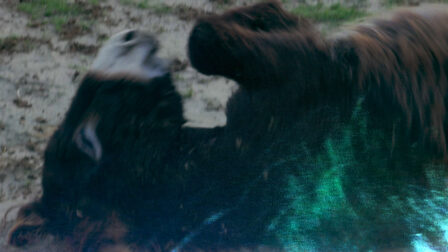Silvia Zayas
Long-term residency
May 2025 - April 2027

Silvia Zayas. León, 1978
Silvia Zayas is a Luso-Spanish artist whose work is situated at the margins of live arts, video, and choreography. She challenges the boundaries between languages, creating space for meaning to be suspended and for alternative, distanced modes of filmmaking to emerge. She approaches filmmaking as a (political) alibi to provoke and sustain collective experiences of entanglement and spending time with others, as in jumping scales (2018) or ruido ê (2021–2023), where a “relational mesh” was created with artists, scientists, divers…
She investigates the creation of homemade, rudimentary, and low-tech devices for live cinema. She is interested in the extraordinary and in almost invisible phenomena—those that can be perceived by sustaining bodily modes of attention. She questions the limits between languages, opening space for the suspension of meaning and for ways of filming from a distance. To that end, she moves away from the usual “hand-eye” relationship and seeks to legitimize the sensory possibilities of an amateur, vulnerable, sick, mischievous, hidden, punk, and also B-movie-like body. She enjoys interruption, mess, and the rawness of editing. She also embraces the queer and bastard nature of form: she tends to remix genres, suspending their clichés and what is expected.
Among her most relevant works are the live film São Tomé Revisitado (2012), in collaboration with her mother Isabel Serra; Parallax (2016), a stage piece for light and sound; the films The Boogie-Woogie Ghost (2018) and Puebla (2021), with María Jerez; Talking Pictures – una película hablada (2018), with Esperanza Collado; the “film without film” projects Brilliant Corners (2020) and Brillante (2020–2022), both part of the Orquestina de Pigmeos collective; the solo exhibition ê (2021); and the recent film ruido ê (the film) (2023).
She is a member of Catsharks, an association dedicated to the conservation of sharks and rays, where she continues to collaborate with scientists, and of Dorothy Michaels, a collective office for production and research in live arts.
Recently, she has been working with autobiographical material to explore collective trauma and inherited guilt in a second generation of girls: the daughters and nieces of former combatants from the Colonial War. This research addresses the re-narrativization of that violent and shameful history through childhood imagination, shaped by silences, eavesdropping behind doors, pop music, dance, syncretisms, and ghosts.
